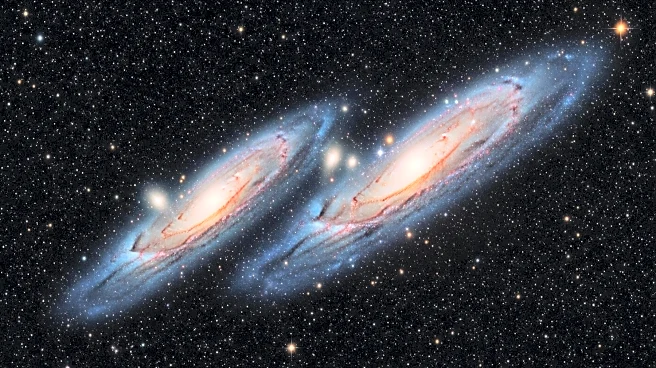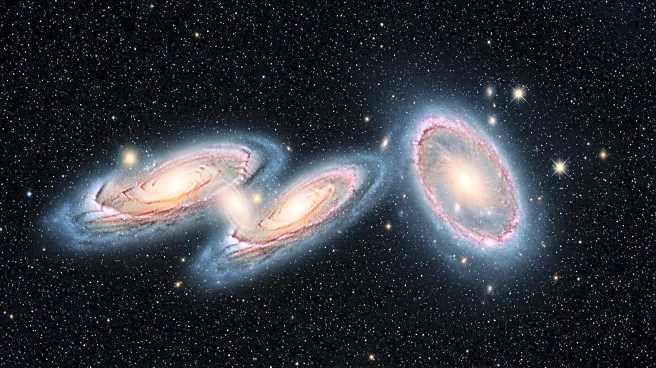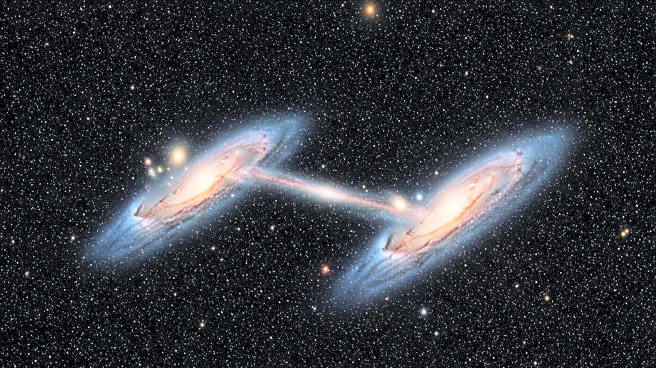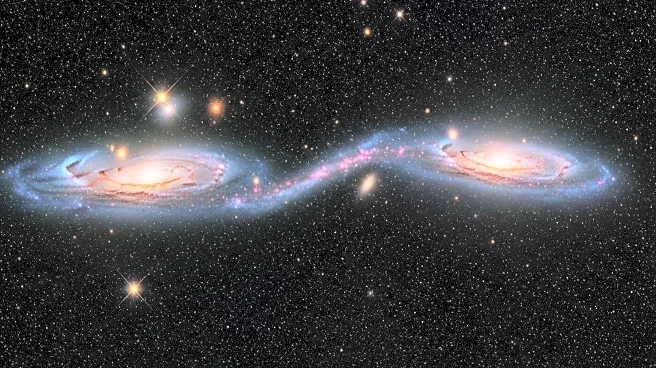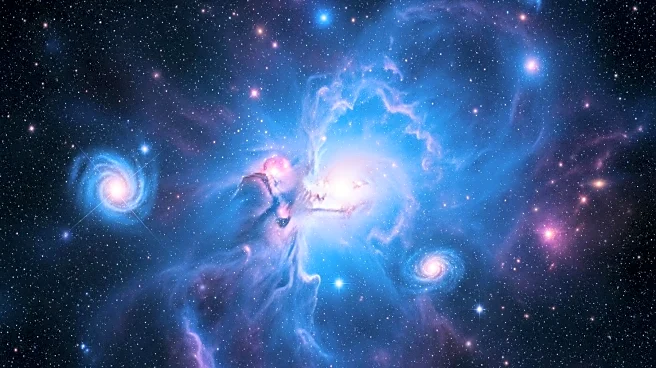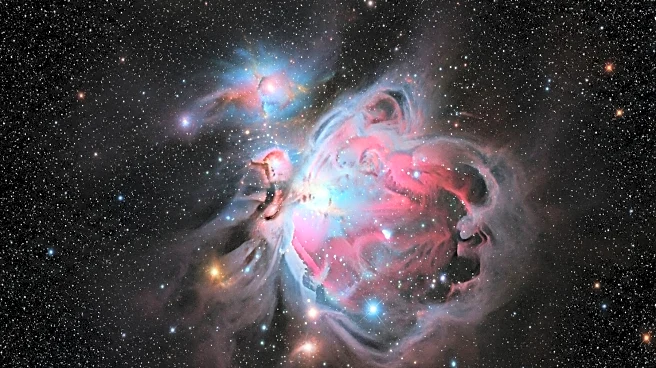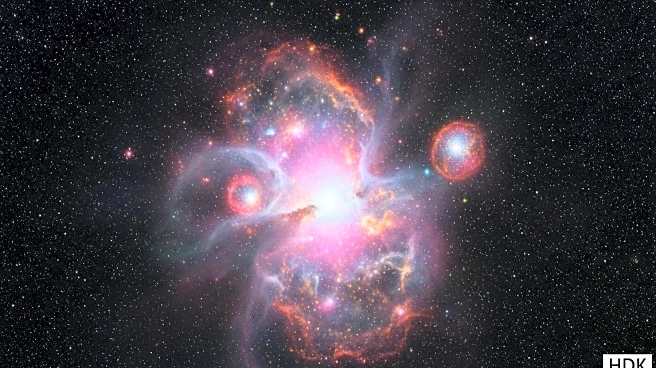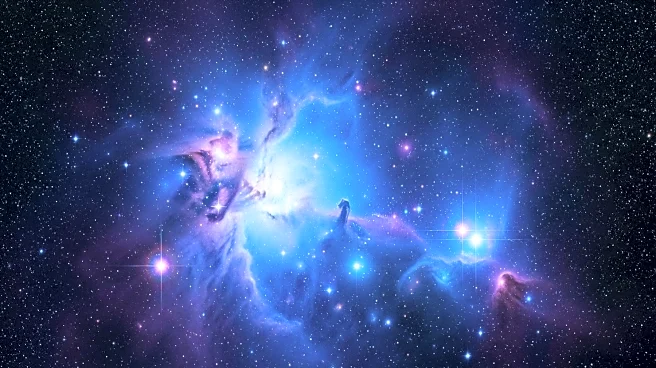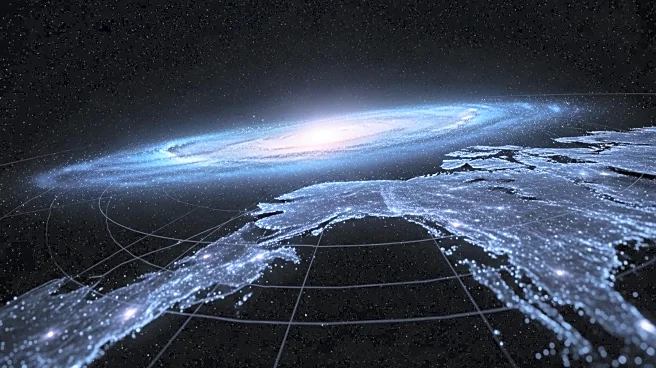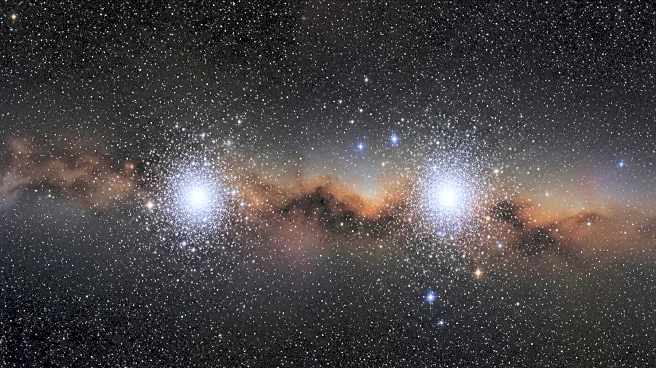What's Happening?
Astronomers have identified a massive gas bridge between two galaxies, NGC 4532 and DDO 137, as they fall into the Virgo Cluster at a speed of 547 miles per second. This phenomenon, observed using the Australian Square Kilometre Array Pathfinder (ASKAP) radio telescope, reveals a 1.6-million-light-year-long tail formed by ram-pressure stripping. The gravitational tides between the galaxies pull gas out, forming the bridge and associated spurs. This discovery helps astronomers understand the dynamics of galactic gas redistribution and star formation processes, similar to the Magellanic Stream between the Large and Small Magellanic Clouds and the Milky Way.
Why It's Important?
The discovery of the gas bridge provides critical insights into galaxy evolution and the redistribution of galactic gas. Understanding these dynamics is essential for comprehending star formation conditions and the life cycles of massive cosmic structures. The findings contribute to the broader understanding of the universe's complexities and the history of star formation. This research also highlights the role of cosmic forces like gravity and pressure in shaping galactic structures, offering a deeper understanding of the universe's most massive entities.
What's Next?
The observations were part of a pilot study for the Widefield ASKAP L-Band Legacy All-sky Survey (WALLABY), which aims to study neutral hydrogen in galaxies across the sky. Future research will focus on further understanding the cosmic forces that shape galactic gas and their role in star formation. The study will continue to explore the dynamics of gas bridges and their implications for galaxy evolution.
Beyond the Headlines
The study of gas bridges and tidal tails offers a unique opportunity to explore star formation hotspots in the universe. These structures are known to be regions where stars are actively forming, providing a window into the processes that govern star birth and the conditions necessary for it. The research also emphasizes the importance of understanding the interactions between galaxies and their environments, which can lead to significant changes in their structure and composition.

